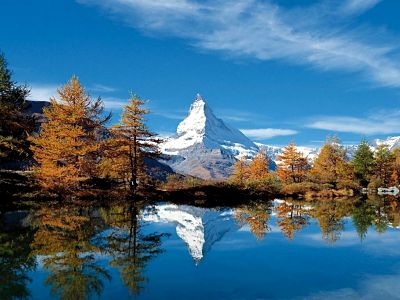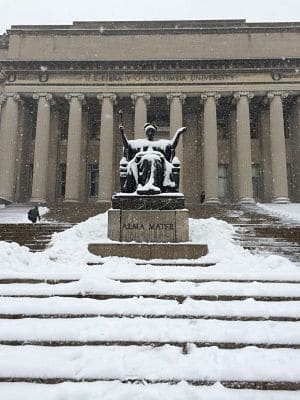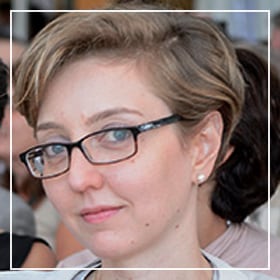When I introduce myself as an historian, I am usually met with any one of a number of different reactions. There is the enthusiastic yet bitter, “I was always interested in history but ended up in finance.” The encyclopaedic “you must surely have heard about the recent discovery of lost documents…?” The inattentive, “what is the title of your research again?” But more often than not, I am met with “what is your study for?”
This question has been swimming around in my head since the end of my PhD, when faced with the personal and structural difficulties of the “post-phase.” I wanted to be sure that my energies as a young scholar attempting to enter academia were worthwhile. My answer rests in the juxtaposition, then the causalities, of three seemingly unrelated things: Swiss mountains, a song by Aretha Franklin, and the Bosphorus. By exploring the relationship between these three things, I attempt to explain the role of history in refugee studies and the importance for refugee governance of in-depth connections between the past and the present.
This essay also reflects on the shapes and forms of the creative process. Years of researching, reading, thinking, looking around, talking to people, watching movies, observing artwork, travelling, and eating, have all contributed to it. It also considers the hybridity and richness of cultural interactions as a locus classicus of an imaginary line connecting Italy, Switzerland, Armenia, and the United States. My understanding of history and the links between Swiss mountains, the song, and the Bosphorus interweaves with who I am and what I have experienced. Using refined anthropological terminology, the self is not to be seen as an end but as a means towards deeper understanding.
For my doctoral research, I reconstructed how, why, and under what circumstances international organizations, governments, and some individuals responded to the needs of Russian, Greek, and Armenian refugees at the end of the First World War. Indeed, it was not until the First World War that refugees became a massive phenomenon. Circumstances both during and after the war, national and international efforts to find peace and collective security, and the growing ideological divide between Western countries and Bolshevik Russia all played a role in fixing the boundaries of the refugee question.
With my research, I argue against the assumption that the international refugee regime was the “child” of the Second World War and the United Nations system. Without conceiving history as a progressive and linear movement, I contend that examining the tensions, forces, paradoxes, and power-relations behind refugee humanitarianism from a historical perspective is pivotal for understanding the mechanics at the core of the international refugee regime. For instance, the reason why repatriation is one of the preferred solutions for displaced persons nowadays depends on the centrality of nation-state – a concept on which the international system is rooted and which was “crafted” at the Paris Peace Conference in 1919. Refugees are the product of the nation-state system, which decides who is included or excluded from it. The idea and practice of resettlement was also designed in the early 1920s. This happened in coincidence with the dire humanitarian conditions that many Russian and Armenians refugees faced and the increasing difficulty of sending them “home”. At the same time, the seeds of international refugee law lay in the efforts to provide refugees with identity documents and attempts to legally define them. The first definition of Russian and Armenian refugees was approved in 1926, way before the 1951 Geneva Convention.
Furthermore, it is not only a matter of what history is for, but also from where. My research is based on an extensive set of primary sources, which I removed from dusty boxes in the archives of governments, international organisations, non-governmental organisations, and individuals. Over the years, in addition to Geneva, where I used to live, my historical imagination brought me to such places as London, Oxford, Cambridge, Oslo, and Stanford…
After my PhD defence, I wished to take some distance from my thesis and be in nature. I decided to spend two weeks uprooting wild plants in freezing rain, climbing mountains looking for blackberries and raspberries, and washing dishes. By the end of the two weeks, my hands were rough. This was not the only “take-away” that I gained from this experience however. Even up in the mountains of the Fribourg region, I befriended a former Polish refugee from the Communist period. She was a friend of the family that hosted me. Spending some time with her gave me the chance to be introduced to her world. Bits and pieces of her life came out through her thick accent and materialized in many of the memories she shared, the objects she possessed, and the dishes she cooked. Moreover, her story of displacement, family ties, language, and cultural confrontations reminded me about the challenges of writing histories that are connected to the present. At that moment, it also began to occur to me that writing about institutions dealing with refugees no longer seemed enough.
After my brief sojourn to the mountains, the year 2013 saw me applying for post-doc positions, awaiting the answers, going through some work dilemmas, and finally obtaining some positive news. New York City would be the next destination. Yet the journey towards the post-doc would bring me first to Armenia. Indeed, in the spring of 2013, I spent four weeks in Yerevan, thanks to the Raphael Lemkin scholarship offered by the Armenian Genocide Museum-Institute. After so many years conducting archival research in countries where the institutions dealing with refugees were based, I found myself crossing a geographical, intellectual, and emotional “lines” and living in a country whose history has dramatically been shaped by genocide. I was not prepared for it. Thankfully many new friends helped me to understand and learn from this novel situation.
One of these friends is Anna, a historian working on the gender dimension of the genocide. One day, over lunch, she stared into my eyes and said: “Francesca jan (dear). Your eye colour is the same as the water of the Lake Van.” This is where Anna’s family was from, and where many Ottoman Armenians were massacred and deported. Now Van is a region in the Eastern Turkish territory. “I have never been there” – she continued – “as the suffering and sadness for what my people had been through is still too deep.” Next year, 2015, will be the one hundredth anniversary of the Armenian genocide.
There are many things that remain vivid in my memory from my time in Armenia. Witnessing the never-ending crowd that brought flowers to the eternal flame on Memorial Day is certainly one. But also speechlessly observing the magnificence of the Ararat for the first time on a clear, cloudless day. Travelling the country and visiting some of the beautiful sights of Medieval Christianity or observing the landscapes of the Lake Sevan before a spring thunderstorm were also highlights. And all the people I met.
Somehow I am only now processing some of these experiences. Indeed, once back from Armenia, it was almost time to leave Geneva. The “New World” and Columbia University were awaiting me. I have come to realize that the major novelty of this new exciting chapter of my life is not simply a new academic environment, albeit a very stimulating one. It was moving from the cocoon of Geneva and the calm of Carouge – for those of you who are familiar with the charming Swiss area – to Harlem. Better yet was the significant change of navigating between Harlem and the campus of Columbia. The two realities sit side by side in Northern Manhattan. However, for how much Harlem and Columbia acknowledge each other’s existence, they seem to live parallel lives. The racial and social divide between the two is striking. New forms of segregation, cycles of poverty, and inequalities are what I witness when I go home. They are also those that I leave behind when I enter the gates of Columbia.
When one of my friends told me that living in Harlem was a great opportunity, I did not understand exactly what he meant. This friend shared a video of the song “Spanish Harlem”, as interpreted by Aretha Franklin.
http://www.youtube.com/watch?v=ctvQiZE68Hg
In Harlem, I am not only a historian but also a migrant in a heterogeneous community. Harlem is “Spanish” as well as African-American, Caribbean… and now even a little bit Italian. When I meet people in the cafes or talk to people in the streets, the reactions I get to be a historian and work on forced migrations are almost all related to slavery and African-American history. I have been asked several times to provide help reconstructing family trajectories. Expressions such as “embrace the past” or shedding light on the past as a form of individual and collective empowerment are those that I hear the most. Harlem is also strength, commitment, creativity, discovery, invention, and reinvention.[1]
I daily cross the path of people and their (hi)stories. Some of them come from the archival sources that I base my research upon, while others are those that come from the people I meet on the platform of the subway number 1 every morning. This essay maturates from the discomfort of realizing and experiencing the dichotomy between academia and the world. It comes from the frustration of knowing that years of research rarely reach a larger audience and are often confined within the walls of a discipline, even worse a sub-discipline. I do not have a solution. I am exploring new directions while writing this essay.
To me, the equation “archives-world-archives”, in this precise temporal and interrelated order, seems to bring a more holistic approach to history and refugee studies. I believe that the journey of the historian through the sources and life experiences anticipates the shape of books and articles to come. For instance, finding an ethical way of intercalating the journeys of refugees in institutional history will prove to be an important element in readapting the manuscript of my PhD into a book.
Speaking of his beloved Istanbul, the writer Orhan Pamuk, said that he spent his life on the Western shore of the Bosphorus, gazing at the Eastern landscape. Pamuk came to Columbia as a visiting professor a few years ago and took part in a conference, where I was lucky enough to listen to him last November. Istanbul is commonly defined as the gateway to the East. The duality, interconnection of the West and East, and the encounter with the other also seems to be valuable for other contexts. The awareness of being one and many might help connect the historian with the migrant, Columbia with Harlem, history with refugee studies and the international refugee regime. Reconstructing, imagining, and explaining the past can take fascinating, meaningful, and judicious possibilities of form. By sharing some of the “stops” of my personal and intellectual journey, and proving how deeply they are linked, I am giving merely a glimpse of the story of my encounter with the world.
[1] Herb Boyd, ed., The Harlem Reader, New York, Three Rivers Press, 2003.
Bibliography:






